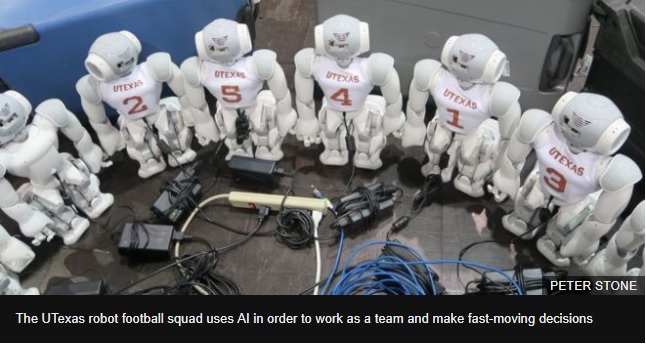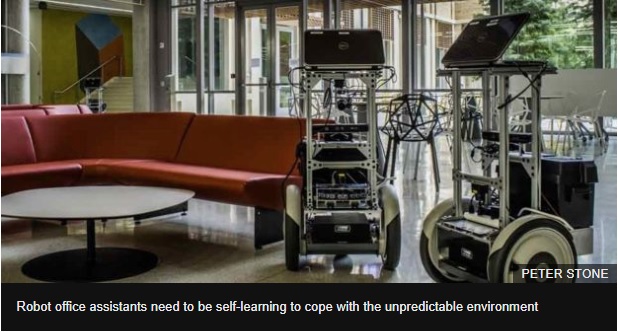
Researchers in Texas are developing robots that have minds of their own.
The scientists are creating systems that can learn for themselves and be able to operate in the home, the workplace and even on the sports field.
The University of Texas, Austin team is incorporating artificial intelligence into its machines so that they can deal with real-world situations.
Among the systems are automated assistants that will carry out simple tasks in a working office
Science fiction films predicted that in the future we would have intelligent robots.
In the Day the Earth Stood Still, we had the sinister Gort; in Forbidden Planet there was Robby; and in the TV series Lost In Space it was Zachary Smith's nemesis, the Robot.

It's been more than 50 years since those fictional representations - so where are they?
Although we have had robots in factories for decades, getting them to leave the shop-floor has been no easy task. In manufacturing plants, they carry out pre-ordained, repetitive tasks all day and night.
But if they step outside, they are unable to deal with the chaos of the real world. It is a place where order and routine are gone. Even the simplest of tasks are complicated by the unpredictability and vagueness of human interaction.
A team at the University of Texas, Austin has set itself the challenge of bringing robots out of their comfort zone and into our messy world.
Laptops on motorised pedestals wander eerily through the lab like slow, partly built Daleks. They are the researchers' Building Wide Intelligence Project. Currently, they are learning their way around the place.
So far they have learned how to avoid bumping into stuff. But great things are planned for them.
The aim is for them to be able to carry out simple instructions, like finding a colleague or locating and bringing over a piece of equipment. But that is easier said than done.
They need to be able to recognise objects and people. They also need to understand rather than recognise human speech. There is a difference. The later involves having a limited number of voice commands pre-programmed into them. But understanding requires context and meaning.
This can only be achieved using AI techniques, which involve the robot asking questions to help it understand what words mean. The researcher leading the project is a linguist, Dr Jesse Thomason. He has restricted the number of questions the partly built Daleks can ask to just five. Why so few?
He tells me that the robots can become "infuriating" with their questions. They would ask them forever like a small child.
Top team
Indeed, when Jesse teaches one of the robots it seems like he is talking to a baby.
His colleague, Dr Andrea Thomaz, is trying to teach human etiquette to the Daleks.
She wants them to know when it is appropriate to approach a human and start up a conversation.
Dr Thomaz has developed code to enable the robots to give out social cues, such as waving at someone, and then to look for movements or expressions from their human counterparts that indicate that they are happy to talk.
"The problem really is that robots have to be able to deal with the dynamics and noise and unpredictability that people bring into the environment, and so we have to think about perception, control and learning to build robots that can deal with that sort of thing," she told BBC News.
In another part of the lab, humanoid robots are playing football. They are part of an international "RoboCup" initiative, which has set itself the challenge of building a team capable of beating the men's World Cup winners by 2050.
The robots play on a mini indoor football pitch, working together as a team and learning from each match.
Tiki-taka robots
Playing football is far harder for machine-learning systems than chess or go, according to Prof Peter Stone who leads this project and plays football regularly himself.
"Rather than turn-taking, you have everyone moving at the same time. And if you take too long to decide what to do when you pass the ball, your opponents come and take the ball from you.
"It's also continuous. There are no discrete places where people need to be. They are always moving, through the air and through space.
"So there are many challenges in contrast to some of the board games."
The kinds of robots in 1950s films are still in the realms of science fiction. But with rapid strides in artificial intelligence, it won't be long before they become part of our every day lives.

